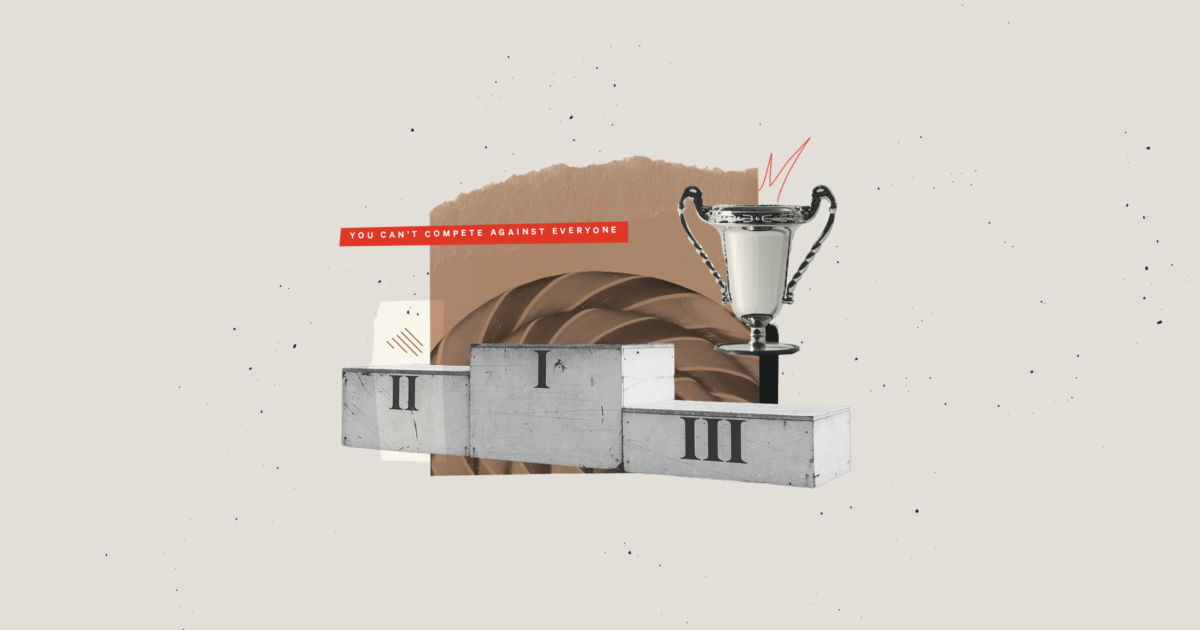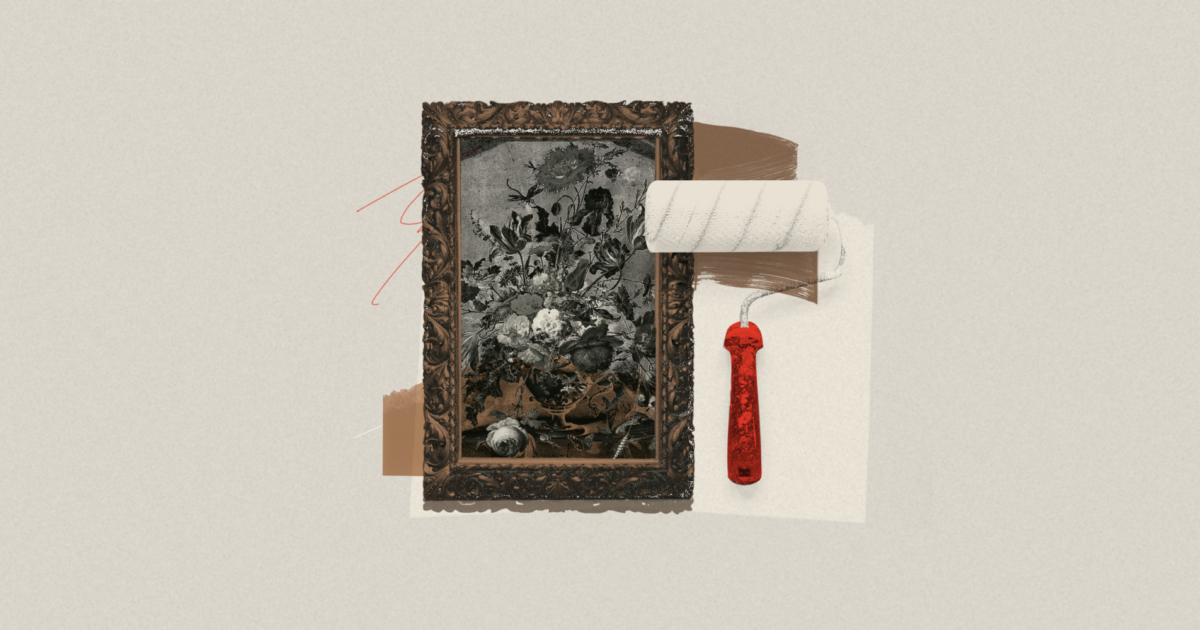There’s no decision more critical to a seven-year-old than staring at a wall of candy trying to make the right choice, hoping they’ve considered every possible option. Pinpointing your competitive landscape can feel the same way.
When I was seven years old, I loved nothing more than spending holiday weekends at my family’s cottage on Lake Huron. The quaint downtown was like a throwback to 1950s Main Street, and the general store was my stomping ground.
This place had everything! Bubble gum, candy bars, hard candy, taffy, popcorn, cookies, ice cream, sundaes, toy guns, quirky hats, stuffed animals, you name it. They were all competing for my attention, and my parents’ sanity. I wanted some of everything. But what my parents did to help me decide was nothing short of brilliant — and, I’m guessing, an act of self-preservation.
They would help me narrow in based on certain guide rails. First and foremost, I only ever had five dollars to work with. Then the Q & A would begin.
“Do you want one larger thing now or a few small things over the next few days?”
“One thing NOW,” I answered.
“Do you feel like something chocolatey, sour, fruity, chewy, or cold?”
“Cold but also chocolatey,” I replied.
“Great! Ice cream it is,” they said as they ushered me to the freezer case.
And once I was there my choices got easier and easier to make. They knew everything in that store was on the table. But, by giving me only a few targeted options based on what I was craving, I walked away with the best result.
Why do we have such a tough time choosing? The simple answer: paradox of choice. Any kid in a candy store is going to feel overwhelmed, and your customers are the same way when they're seeking to choose someone to work with. With so many possible challenges to your brand, it can be daunting to know which competitors to focus on. The not-so-simple answer: so many aspects of building a brand are interconnected. Your competitive landscape is one of the integral pieces to get right for the best result.
You can’t compete against everyone. And, there will always be something pulling for your audience’s time, attention, and dollars.
{{divider}}
What Do We Mean by Competitive Landscape?
Your competitive landscape is the list of options a customer could choose rather than your brand. You have direct competitors, sure, but depending on your unique mix of industry, audience, and existing solutions to the problem your brand is solving, you may also compete against indirect competitors.
Direct competitors exist in the same industry as your company, and deliver a very similar, if not the same, product or service. Think Hershey’s and Nestle. Both compete in the chocolate bar space and sell similar products in their own unique way. Hershey’s products tend to have a bitter taste, while Nestle is focused on sweet tasting offerings. Direct competitors also have comparable quality and price points as your brand while targeting the same audience. If any of these aspects are missing, you may want to reconsider whether you’re directly competing with another brand.
Indirect competitors deliver a different product that satisfies the same audience need. They likely exist outside or adjacent to your industry, though they may be in the same industry. In the case of energy drinks, coffee or supplements may be indirect competitors to Red Bull and Celsius. Pedialyte was always a distant indirect competitor to Gatorade or Powerade until they recently entered the sports drink market and became a direct threat. Think of indirect competitors as the alternative option people may choose to solve their problem. The goal with indirect competitors is to understand the role they play in filling an audience’s needs and whether they have the potential to take significant market share.
{{divider}}
How To Identify Your Competitive Landscape
During the strategy phase of your project, our team will ask you about your competitive landscape. The goal of asking you to identify your top three to five competitors is so we can take a deep look at what is already present in the landscape — the popular differentiators competitors are latching onto, as well as clichés and best practices that occur visually and verbally.
Narrow down your list based on your audience and what they consider a viable alternative. For example, Microsoft is one of the most widely-known brands — making it a viable choice in many industries. However, you may have more astute insight that their offering isn’t as robust as yours. Yet, your audience puts them on their short list when deciding which brand to choose. Identifying the most likely options your audience will consider — whether they measure up or not — gives us the most complete understanding of how to evaluate your brand in comparison.
In choosing three or five, consider what they offer, the quality of those offerings, the price point, and the audience they target. A great place to start is to look at companies you’ve lost clients to. Simply asking prospects what made them choose someone else can give you insight on whether a brand directly or indirectly competes with yours. You may find the same characteristics in a competitor except their price point — making them more desirable to a different audience. If you look closer you’ll probably discover other differences that make them less or more viable competitors.
Our rationale for examining your competitors more closely is to better grasp the brands that are competing for the attention of your audience. Doing so means we are better equipped to create a brand that is truly unique to your organization and will be more compelling to your audience. In order to create this advantage, we need to have an understanding of what else exists. From here, we form a clearer picture of where opportunities lie.
{{divider}}
Why Your Competitive Landscape Is Important
Our analysis of a brand’s competitive landscape is a key part of our Research & Evaluation. In conjunction with your target audience, existing brand, and business objectives, your competitive landscape makes up one of the most significant inputs of our initial strategy work. It’s best to know where you are now to establish a benchmark. This provides a starting point we can measure against as our collaboration progresses. For this reason, we want to ensure the most relevant competitors are chosen by your team.
We limit your competitive list to three to five, so we are able to do a deep dive on a robust group of competitors, while maintaining enough specificity to find the clichés and best practices. A smaller sample wouldn’t supply enough information for common takeaways, and a significantly larger one may create muddied insight that lacks specificity.
Your brand’s trajectory will often indicate the challenges you’re likely to face as you grow. For instance, a recent client identified four clear competitors all pursuing the same audience as their brand. However, they included a fifth that would eventually become a threat as their product roadmaps converged. A competitive landscape built for the future iteration of your brand will help you plan for threats today, as well as challengers tomorrow.
A competitive landscape built for the future iteration of your brand will help you plan for threats today, as well as challengers tomorrow.
You must step back and take a 30,000 foot view at all the areas of your brand that interconnect. Your competitive landscape is one of the integral pieces to get right. Depending on your unique mix of industry, audience, and existing offerings, your brand may compete with other options you weren’t aware of. Doing a deep dive into these competitors to evaluate differentiators, trends, and best practices will give your brand a sweet spot to hit as your rebrand.




